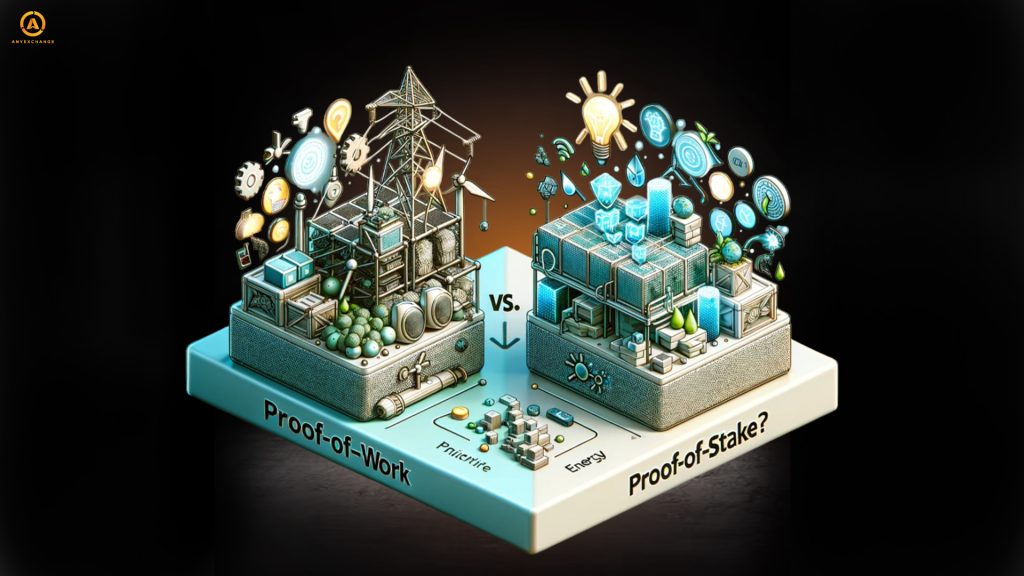
Blockchain technologies and cryptocurrency projects are often heavily criticized for their negative impact on the environment. However, in recent years, the hype surrounding this topic has become increasingly controversial. Let’s understand the controversy that surrounds decentralized technologies in terms of their environmental impact and find out how things really are.
Introduction to the issues
Blockchain technology plays an important role in the fourth industrial revolution. Industry 4.0 is characterized by the integration of information technology with physical technology, resulting in the interpenetration of the physical, biological, and digital worlds. Information technologies become at the service of man, increasing the level and quality of his life in all spheres and principles of life activity of mankind as a whole. The fourth industrial revolution is manifested in the development and implementation in global processes of such advanced technologies as artificial intelligence, blockchain, quantum computing, the Internet of Things, augmented and virtual reality, nano- and neurotechnologies, and other innovations.
Driven by economic expediency and people’s natural desire to improve the quality and standard of living, the fourth industrial revolution carries risks of destabilization or even collapse of global systems due to its all-encompassing nature.
In order to minimize these risks, the fourth industrial revolution is balanced by the principles of sustainable development, the main objectives of which were formulated and enshrined by the United Nations in the “”Agenda 2030″” document. They inсlude a set of measures aimed at ensuring that human progress is achieved without compromising future generations, while preserving the environment and resources. One of the key goals is to combat climate and air pollution and to preserve the planet’s biodiversity. Blockchain technology also plays an important role in the global concept of cryptocurrency sustainability.
The concept of blockchain in the context of current transformations
Although distributed ledger technology is more commonly associated in society with the financial sector, it can bring tangible benefits in environmental systems. Blockchain and environmental initiatives represent an effective tandem to address the challenges at hand. Blockchain technology enables transparent management of natural resources, helps prevent unethical market trading, reduces costs, and incentivizes the transition to a circular economy based on the principle of resource renewal.
Green cryptocurrency mining

Mining companies are reducing their equipment’s dependence on carbon-based fuels every year. In 2020, major market players signed an agreement to switch to renewable energy sources by 2025, and reduce their carbon footprint to zero by 2040. Green energy innovations are being actively adopted.
Solar energy mining
This type of renewable energy mining for blockchain is widely used in mid-latitudes, especially in Asian and African countries where there are a large number of sunny days per year. At the same time, the hot climate reduces the cost-effectiveness of this type of green mining, as it requires costs associated with the need to cool the equipment to prevent it from overheating.
Hydropower mining
Hydropower mining is the most common and relatively easy to implement method of virtual asset mining. In particular, before the ban on mining in China, more than 65% of bitcoin mining was concentrated in the central provinces of the Middle Kingdom. The abundance of turbulent and fast mountain rivers creates ideal conditions for generating significant amounts of energy.
Wind mining
This method is not yet as in vogue as the previous ones, and is usually used in a complex. It is becoming more common to find farms that combine different methods of eco-mining, maximizing the natural resources available in a particular area.
Heat recycling
Powerful mining equipment generates excess heat in the process of mining coins. By recycling this heat, the negative impact of mining on the planet’s climate can be minimized. Canada is one of the countries actively implementing such initiatives. Local mining farms successfully use excess heat energy to heat homes and greenhouses.
Proof-of-Stake vs. Proof-of-Work

Bitcoin and early cryptocurrencies run on the Proof-of-Work (PoW) consensus algorithm, which relies on miners using the processing power of hardware to mine coins. PoW requires massive energy consumption on a global scale. According to a recent White House report, the Bitcoin network accounts for 60% to 77% of the total global electricity consumption by crypto assets. Today, on an annualized basis, bitcoin consumes more electricity than countries such as Ukraine, Argentina, and Sweden.
The huge energy consumption of the first cryptocurrency and the general energy concerns of PoWs have become the basis for the development of alternative, energy-efficient consensus algorithms. The most common of them today is the Proof-of-Stake (PoS) algorithm. In its application, the confirmation of transactions is performed on the basis of smart contracts and with minimal energy consumption.
Thus, the main way to create environmentally friendly projects is to use alternatives to the PoW consensus protocol. Any PoS blockchain is a priori more environmentally friendly. This initiative has been taken up by the market, and today’s leading altcoins are based on PoS, often with some enhancements.
Practices to make blockchain technology greener
In addition to reducing energy consumption, blockchain is adopting practices that reduce its carbon footprint:
Green blockchains

Let’s take a look at eco-friendly crypto projects that have successfully implemented sustainability into their operations.
Conclusion
According to the Environmental Protection Agency, 65% of global warming emissions are generated from carbon dioxide emissions. Thus, power generation is a major burden on our planet’s ecosystem.
Blockchains with high energy consumption have a negative image in this regard and have attracted increased attention from eco-activists and regulators. The biggest threat to the ecology of PoW algorithms is not even the huge energy consumption, but the use of fossil fuels by companies, which leaves a carbon footprint. Therefore, the solution for such projects is to use renewable energy sources. And here the industry has already achieved significant results (according to bitcoin analysts, the share of green mining exceeded 50% as of last fall).
On the other hand, eco-friendly cryptoprojects, which are moving towards sustainability, are taking active measures to limit the energy demand of their networks, thus reducing their contribution to global warming. In addition, many blockchain projects are purchasing carbon credits to fully offset the emissions they cause.
Hopefully, if trends continue, the future of green technology in cryptocurrencies will change the perception of decentralized systems as a threat to the environment, and we will witness the positive impact of blockchain in successfully addressing all of humanity’s challenges.
AnyExchange is an exchanger through which you can convert cryptocurrency at the most favorable exchange rate . The website also offers worldwide money transfers .





